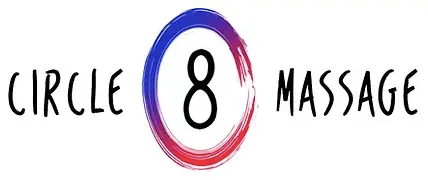Sports injuries are an unfortunate reality for athletes and fitness enthusiasts alike. Whether you’re a professional competitor or a weekend warrior, injuries can disrupt your routine, causing pain and frustration. While rest and medical treatment are essential components of recovery, massage therapy has emerged as a powerful tool in accelerating healing and restoring mobility. This article explores how massage therapy can aid in recovery, reduce pain, and enhance overall performance after a sports injury.
Reducing Muscle Tension and Spasms
One of the most immediate benefits of massage therapy for sports injuries is the reduction of muscle tension and spasms. When an injury occurs, the body responds by tightening muscles around the affected area as a protective mechanism. While this reaction can prevent further damage, prolonged muscle tension can lead to stiffness and discomfort. Massage therapy helps to relax these tight muscles, improving blood circulation and promoting flexibility, which in turn aids in a faster recovery.
Enhancing Blood Circulation and Oxygen Flow
Proper blood circulation is crucial for healing sports injuries. Blood carries oxygen and nutrients to damaged tissues, helping them repair and regenerate. Massage therapy stimulates circulation, increasing blood flow to the injured area and flushing out toxins that may hinder recovery. The improved oxygenation helps reduce inflammation and swelling, allowing the body to heal more efficiently.
Reducing Inflammation and Swelling
Inflammation and swelling are common responses to sports injuries, often leading to pain and restricted movement. While inflammation is part of the natural healing process, excessive swelling can delay recovery. Massage therapy helps by encouraging lymphatic drainage, which removes excess fluids and waste products from the injured area. This reduction in swelling leads to decreased pain and improved mobility, allowing athletes to return to their training regimens more quickly.
Pain Relief and Endorphin Release
Pain management is a significant concern for anyone recovering from a sports injury. Massage therapy provides natural pain relief by stimulating the release of endorphins—hormones that act as the body’s natural painkillers. Additionally, massage reduces stress and anxiety levels, which can contribute to muscle relaxation and an overall sense of well-being. Unlike medication, which may have side effects, massage therapy offers a holistic approach to pain relief without the risk of dependency.
Breaking Down Scar Tissue and Enhancing Flexibility
Injuries often lead to the formation of scar tissue, which can cause stiffness and restrict movement if not properly managed. Deep tissue and myofascial release massage techniques help break down scar tissue, improving flexibility and preventing long-term mobility issues. By keeping muscles and connective tissues supple, massage therapy ensures that athletes can regain their full range of motion and reduce the risk of re-injury.
Preventing Future Injuries
While massage therapy is highly effective in post-injury recovery, it also plays a vital role in injury prevention. Regular massage sessions help identify and address muscle imbalances, tightness, or weaknesses before they lead to a more severe injury. By improving circulation, flexibility, and muscle function, massage therapy enables athletes to maintain peak performance while minimising the chances of future setbacks.
Types of Massage Techniques for Sports Injury Recovery
There are several massage techniques that can be beneficial for sports injury recovery. Some of the most effective include:
- Swedish Massage: A gentle approach that focuses on relaxation, circulation, and overall muscle relief.
- Deep Tissue Massage: Targets deeper muscle layers to break down adhesions and promote healing.
- Sports Massage: Specifically designed for athletes, this technique focuses on injury-prone areas and performance enhancement.
- Trigger Point Therapy: Addresses muscle knots and tight spots that contribute to pain and restricted movement.
- Myofascial Release: Helps alleviate tension in the connective tissues surrounding muscles, improving flexibility and mobility.
Adding Massage Therapy into Your Recovery Plan
To maximise the benefits of massage therapy, it’s important to incorporate it into a comprehensive recovery plan. Combining massage with other rehabilitation methods such as physiotherapy, stretching, and strength training can significantly enhance results. Consulting with a qualified massage therapist who specialises in sports injuries ensures that the treatment is tailored to your specific needs.
Conclusion
Recovering from a sports injury can be a challenging journey, but massage therapy offers a natural and effective way to speed up the process. From reducing pain and inflammation to improving circulation and flexibility, the benefits of massage extend far beyond relaxation. Whether you’re dealing with a minor strain or a more serious injury, incorporating massage therapy into your recovery routine can help you get back to peak performance faster and stronger.
If you’re recovering from a sports injury or looking to prevent future setbacks, consider integrating massage therapy into your routine. Book a session with a professional massage therapist who specialises in sports recovery and experience the benefits for yourself. Your body deserves the best care start your healing journey today!







